Monte Yellow Bird blends history with the present
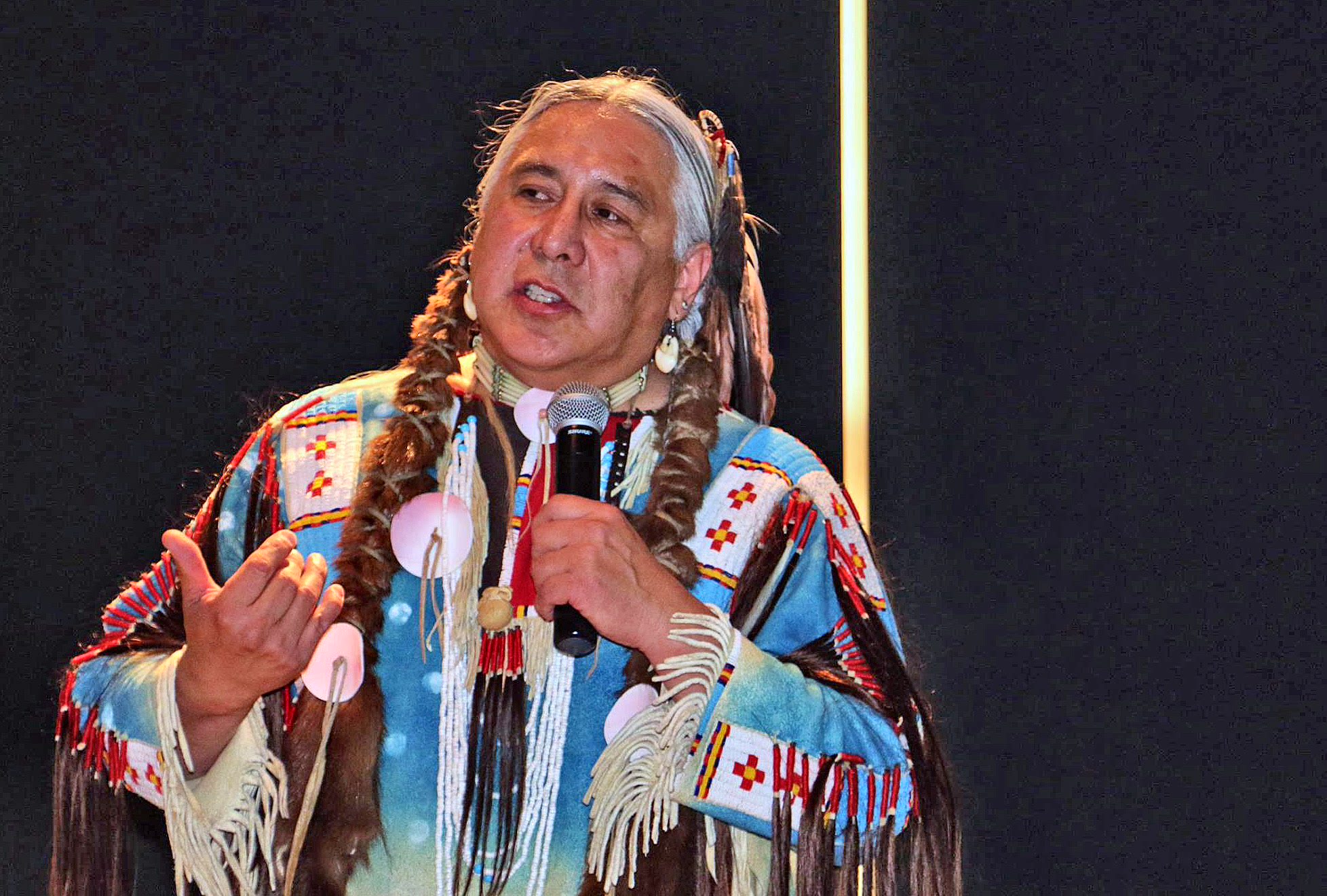
By Amanda Duchsherer
Digital Communication Specialist
amanda.duchsherer@minotstateu.edu
RIO RANCHO, N.M – On the surface, Monte Yellow Bird Sr.’s life seems full of reinvention. Horseman. Mechanic. Carpenter. National Tae Kwon Do champion. Award-winning artist. Educator. Yet beneath the titles and accomplishments, lies a steady constant.
“For me, reinventing yourself doesn’t mean that you expel past experiences or passions. It just means that you extend the idea of the core into other ideas,” he said. “For some people, and I include myself, everything is spiritual-based. Whatever I do, is a continuation of that spirituality. If I go and become a car salesman or sell hot dogs on the corner, I still want to continue that spiritual idea.
“I always conduct myself with the same honor, respect, and spirituality that I want to live by. Redefining myself means that I can reach more people in different capacities.”
Today, Yellow Bird lives in New Mexico and owns and operates a fine arts and educational company, Black Pinto Horse Fine Arts. He utilizes a range of artistic options including painting, sculpture, mixed media, and traditional arts.
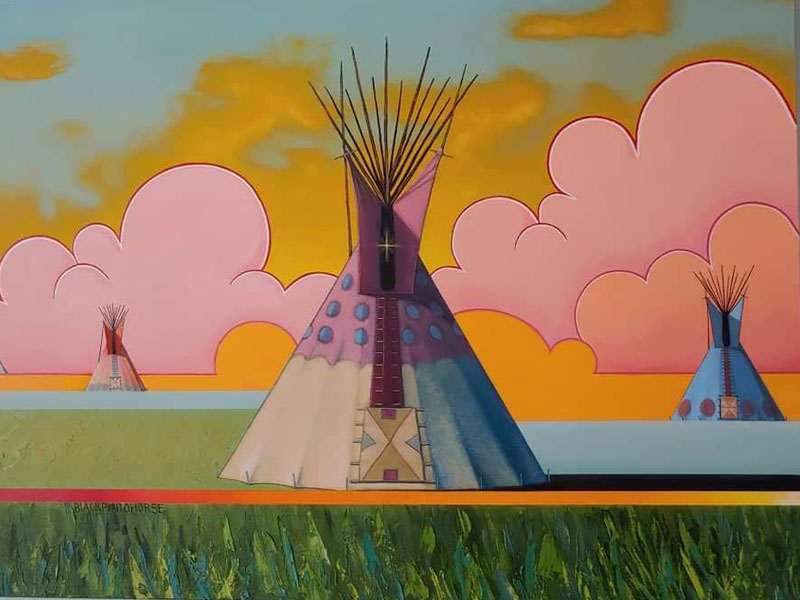
The Journey to Our Lodge
Following family tradition, one facet of his creativity includes creating ledger art as a form of storytelling.
“I’ve always been a historian. I grew up in a deep culture, and of course, ledger art tied into the idea of history and that particular era, what was going on with Indigenous People and policy and so on,” he said. “And with artistic expression — the idea of looking at it in an artistic sense was what mainstream hadn’t really introduced.”
Part of that artistic mindset meant moving ledger art from telling stories of the past to showing images of the present.
“It’s a reminder to us at the present that we can destroy each other’s cultures and our characteristics and our responsibilities if we’re not careful,” he explained. “We need to be able to look at our history, celebrate our differences, and celebrate our commonalities and the things that make us who we are.”
It is a lesson he instills within students who enroll in his education programs.
Yellow Bird has worked with youth for over 30 years, including Tribal and reservation school students, public school children, Job Corps students, and corrections-involved and other at-risk youth. Since 2004, he has led school groups, university classes, community groups, and Fortune 500 businesses through the history of ledger art, Indigenous Peoples and culture, the idea of composition and color theory, self-exploration, and character building.
“I really use art as a huge springboard,” he said. “I use the history to talk about identity. We talk about our heritage; we start looking at the commonalities. What does laughter sound like around the world? It sounds the same. We start looking at the idea of respect, and honor, and discipline, and family, and extended family.
“Then we do an actual project, where we use accounting paper — because we are accountable for the words and the pictures and even the sounds that come out of our mouth.”
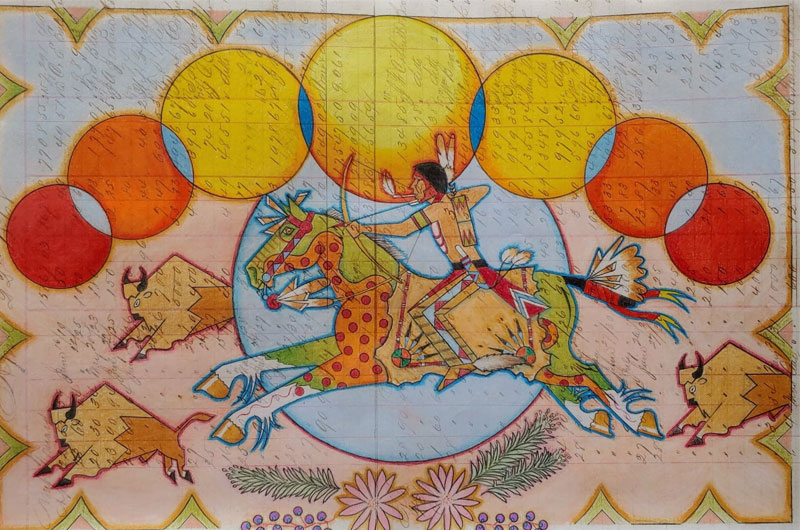
Buffalo Sage Warrior
He has taken his message of sharing and bridging cultures around the globe through his artwork, which has been shown across the United States and in the Arab Emirates, Italy, Netherlands, Germany, France, Australia, Germany, Japan, Canada, and New Zealand.
Yellow Bird’s work has earned national acclaim for decades, beginning with the prestigious National Art Award in 1980 to his 2019 Palm Springs Arts Council Lifetime Cultural Award. His artwork has been commissioned by the Aboriginal Art Acquisition Plan, Vancouver Community College, British Columbia, for their permanent collection in 2010; by the ninth annual Red Nation Film Festival and Awards as their featured image in Gala, Los Angeles, California in 2012; and by IMAGO MUNDI, Venice, Italy, as the Featured Cover Art for the international exhibit in 2015.
Yellow Bird, a direct descendant of Son of the Star and Sitting Bear in his Arikara lineage and Young Bird, a mid-1800s chief from his Hidatsa side, grew up in White Shield and struggled through negative experiences during elementary school. While he was curious about higher education, he was nervous to take the next step. He attended the Institute of American Indian Arts in Santa Fe, New Mexico at age 16, a mechanic school, a carpentry school, and enrolled in a couple universities before landing at Minot State.
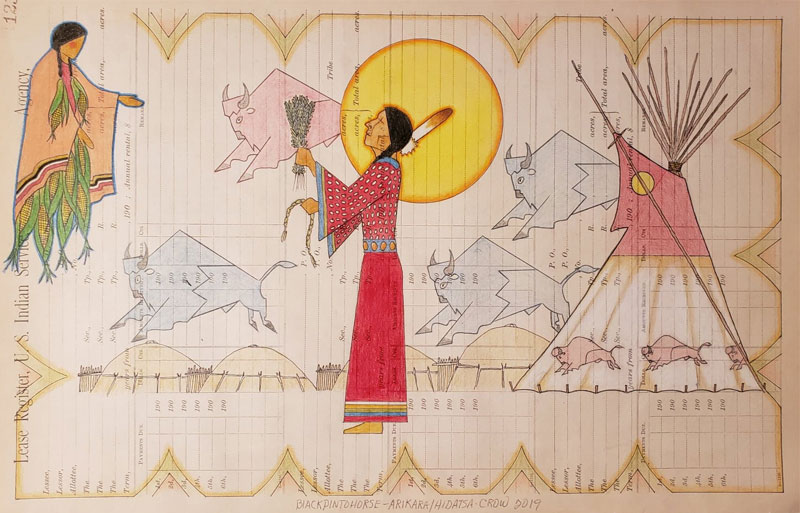
Red Buffalo Cow Woman
“I came to school at Minot State as what they used to call an older-than-average student. It was really intimidating for me. I wanted to graduate. I got closer and closer, and later in life, I wanted to finish. I wanted to accomplish something else,” the 2004 Bachelor of Fine Arts graduate said.
Under the tutelage of Walter Piehl, Minot State long-time past-professor of art, and Bill Harbort, art professor and art department chair, Yellow Bird found the challenges and critiques he was looking for. Linda Olson, art professor, provided the support and encouragement in remembering where he came from while David Bradley, past humanities professor, also contributed to Yellow Bird’s historic interest in his and world cultures.
But perhaps the Minot State memory most true to his personality came through in past- humanities and music instructor Richard Watson’s music appreciation class, where he was able to step in as a teacher and storyteller.
“I always remember when we had our final in his class. I sang a traditional song. At that time, my grandfather was still alive and mentoring me for the next step in my life. So, I sang a ceremonial song in our group. I explained what it all meant, what the words meant,” he said. “It was very memorable.”
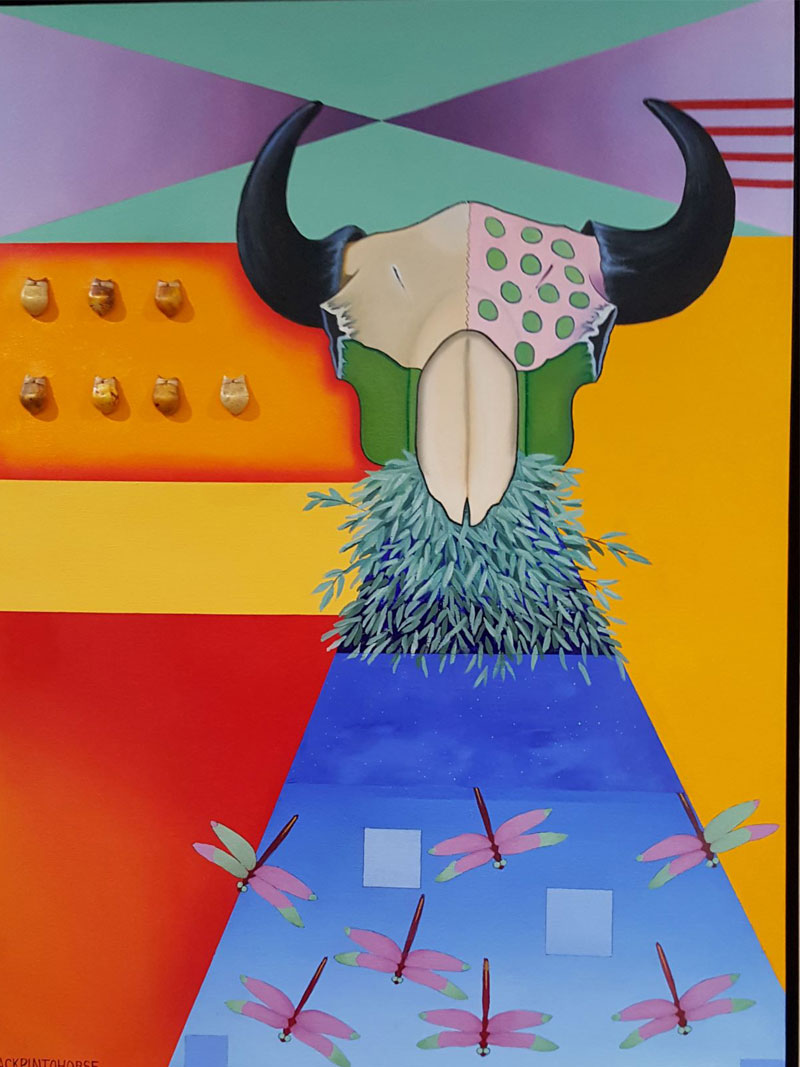
The Voice of Transformation
About Minot State University
Minot State University is a public university dedicated to excellence in education, scholarship, and community engagement achieved through
rigorous academic experiences, active learning environments, commitment to public service, and a vibrant campus life.
Published: 12/22/20



